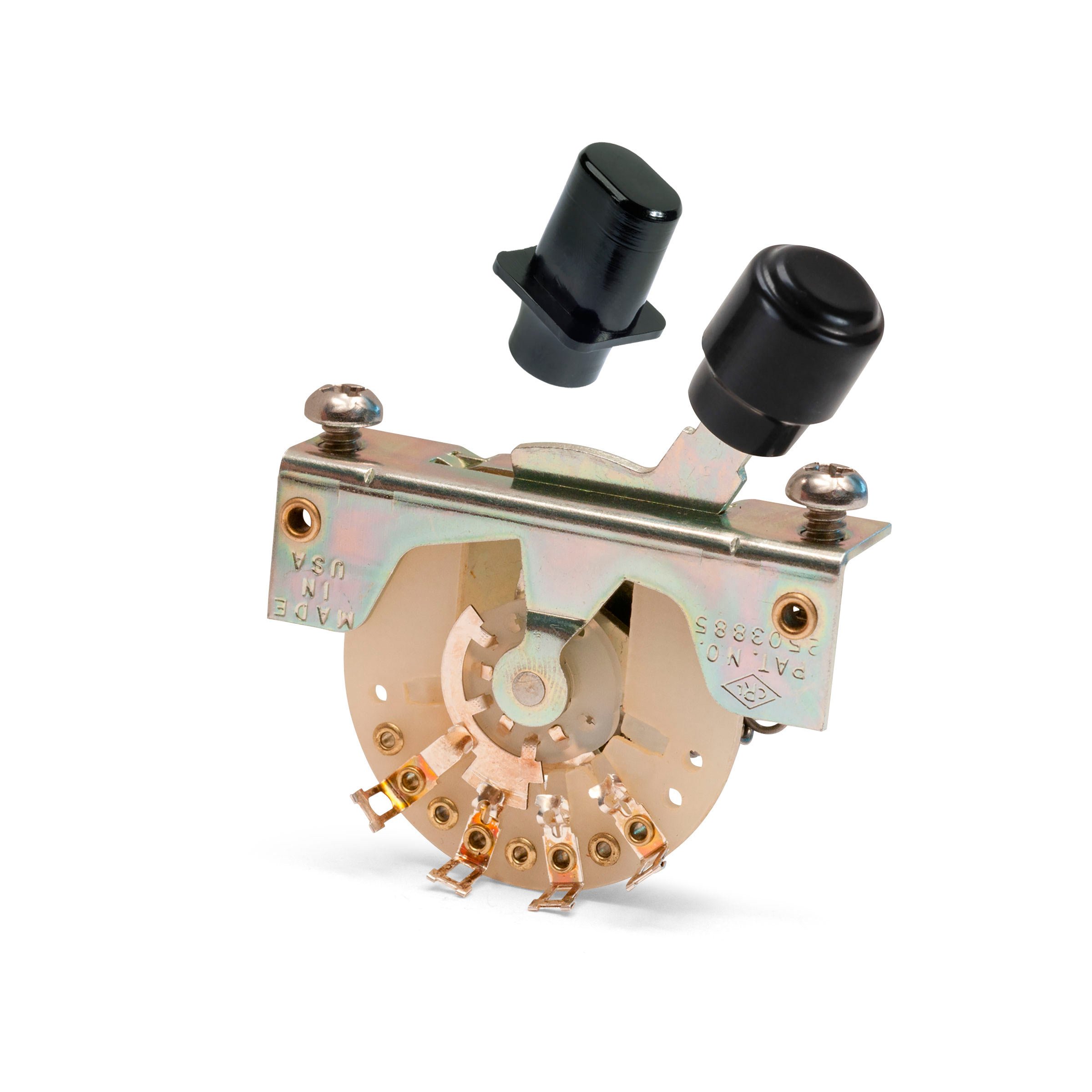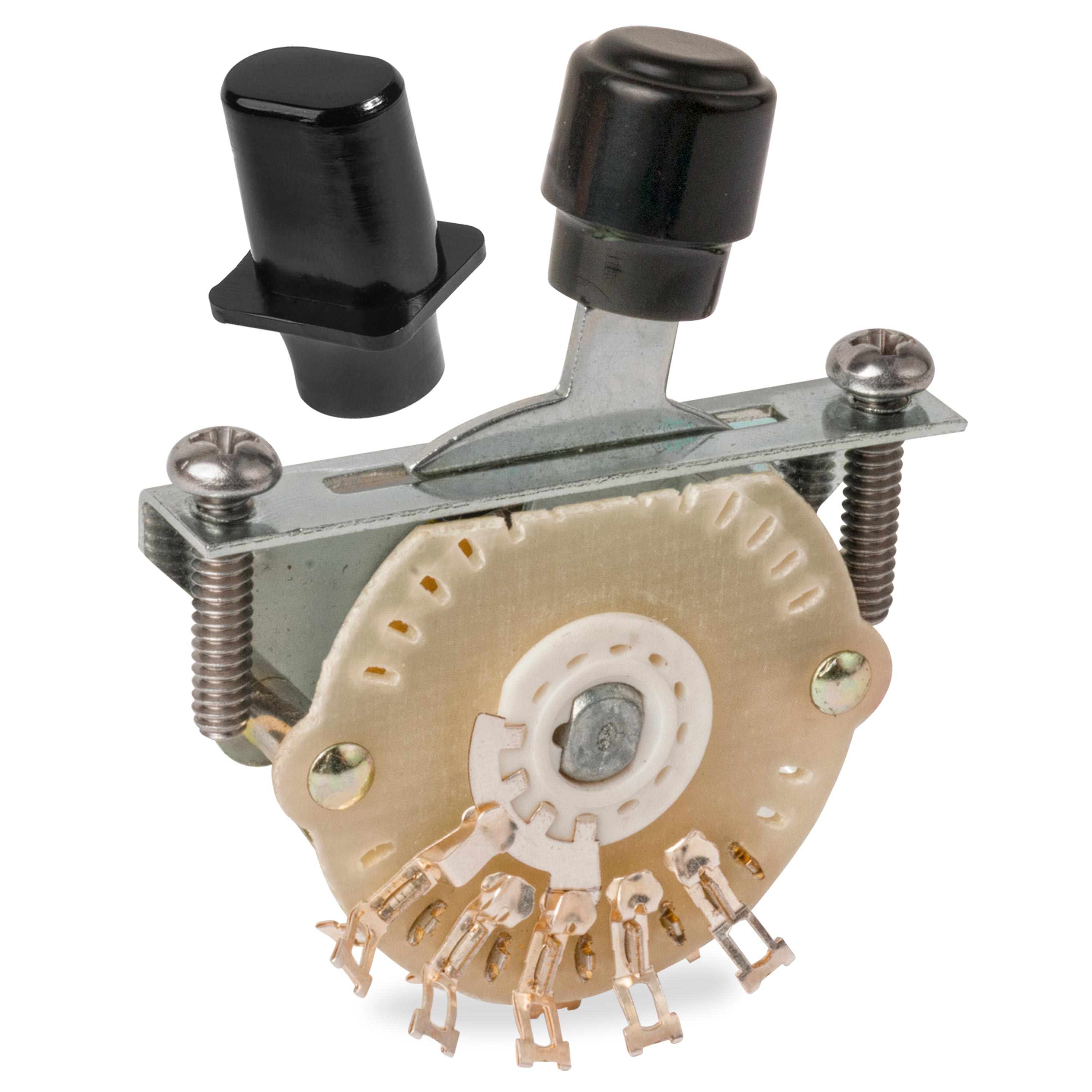Understanding Guitar Wiring, Part 5: Selector Switches
Selector Switches
The pickup switch selects which pickup's output will be sent to the amp. Virtually all pickup selector switches combine pickups in parallel rather than series. Series connections between pickups are possible with a selector switch, but they often require custom wiring.
3-way and 5-way lever switches
When Leo Fender designed the Telecaster®, he used a rather large lever switch that was commonly used in that era. The original 3-position lever switch has two poles. Fender used the same 3-way switch on the Stratocaster® up until around 1977, when the company realized that players had been catching the switch between positions to get two new sounds. Repairman such as Seymour Duncan filed two new stops into these 3-way switches making the first 5-way switches. After 1977, nearly all Fender Strats came with a 5-way toggle.
Except for the two additional stops, electrically and mechanically there is no difference between the 3 and 5-way lever switches. Refer to Diagram #9 for the lug assignment of these simple but useful switches.
More in This Series
Part One: How a magnetic pickup works
Part Two: What is a potentiometer and how does it work?
Part Three: How is a volume pot wired?
Part Four: What is a capacitor and how does it work?
Part Five: Selector Switches
Part Six: Mini toggle switch basics and push-pull pot basics
Part Seven: Output Jacks
Part Eight: Grounding and Shielding
Part Nine: Understanding impedance and impedance matching
Part Ten: Wiring Glossary
Part Eleven: Sample Diagrams


